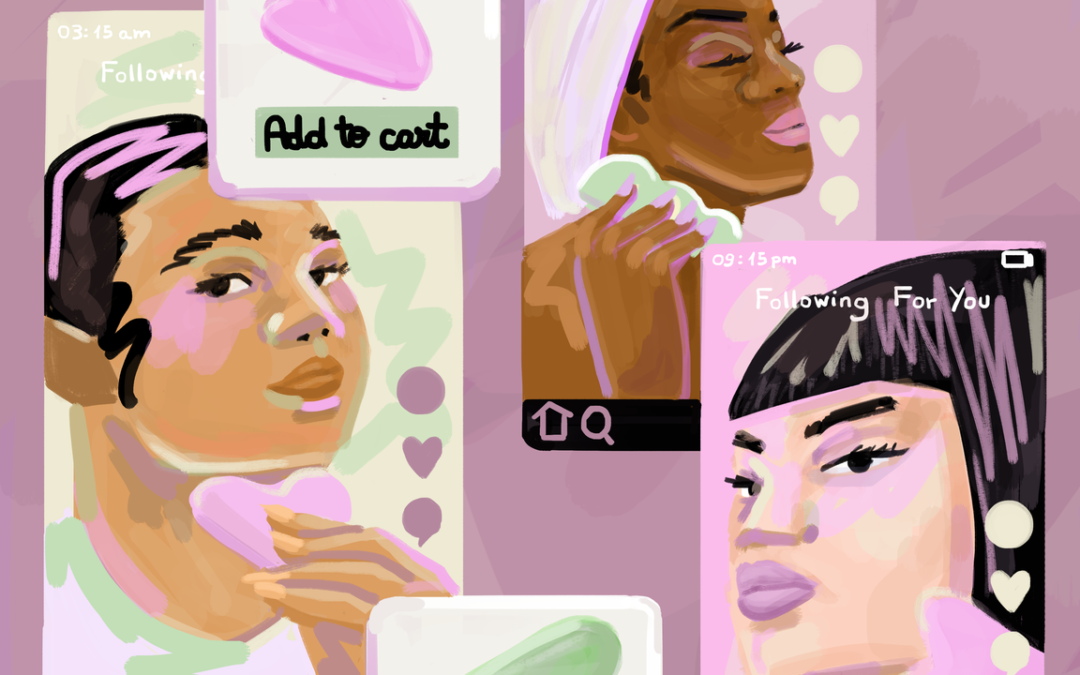For context, you should know that gua sha is not a new practice and its origins have nothing to do with aesthetics. “Gua sha is an ancient Chinese medicine practice that goes back centuries,” Sandra Chiu, a certified acupuncturist, herbalist, and traditional Chinese medicine practitioner based in Brooklyn, tells me. “It is first and foremost a healing technique used to relieve pain and strengthen the immune system.” Stephanie Zheng, a licensed esthetician based in New York City and founder of Mount Lai, a gua sha brand rooted in traditional Chinese medicine, elaborates: “Gua sha loosely translates as ‘to scrape’ in Chinese and is the practice of using a flat tool against the skin to target stagnation and help restore the flow of qi. Qi is vitality energy in the body and has a close relationship with blood flow.” Today, gua sha remains “an important modality” that traditional Chinese medicine practitioners use for the treatment of pain and to support the immune system, according to Chiu.
The practice wasn’t used on the face until recently and, even then, the intended use of facial gua sha is not to erase a double chin or to slim the face by any means. “Facial gua sha is a relatively new ‘cosmetic’ treatment derived from traditional gua sha,” Chiu says. “It is a gentler, softer variation that improves blood circulation, releases excess muscle tension, and smooths fascia” (the connective tissue that essentially holds all your muscle fibers, bones, blood vessels, etc., together). “The goal is still to target stagnation and restore the flow of qi for healthy skin and healthy tissue,” Zheng concurs.
Western culture more or less took that concept and threw it out the window in favor of methods that seem to provide more drastic visual results at the cost of muddling the intentions and abilities of traditional gua sha. On our side of the world, the practice has been widely lumped together with lymphatic drainage, which Chiu credits to the West’s cultural appropriation of the practice. While the two are similar in many ways, they are not the same. “The idea that gua sha is a lymphatic drainage practice comes largely from estheticians, Western MDs, and influencers who interpreted gua sha through that lens,” Chiu clarifies. “Calling gua sha a lymphatic drainage technique is kind of like calling yoga a type of Pilates because they both stretch the body.”
When you apply that perspective to TikTok, it’s clear to see how people on the app got wrapped up in the idea that gua sha can and/or should be used as a tool for double chin reduction and general facial slimming — lymphatic drainage is actually intended to lessen swelling and puffiness, after all. But in the case of gua sha, the subtly sculpted appearance of the face is merely a side effect of improved circulation and the release of tension in the chin, neck, and jaw. “Stagnation can look like excess fluid buildup in the face, which gua sha can help with, resulting in less puffiness or more defined facial features,” Zheng explains. Connecticut-based, board-certified dermatologist Mona Gohara, MD, agrees: “Gua sha can help to shift fluid from one area to another,” she explains, likening the shift of internal fluids toward the lymphatic nodes to pushing water toward a drain using a mop or broom. “It can increase circulation, raising radiance.”

